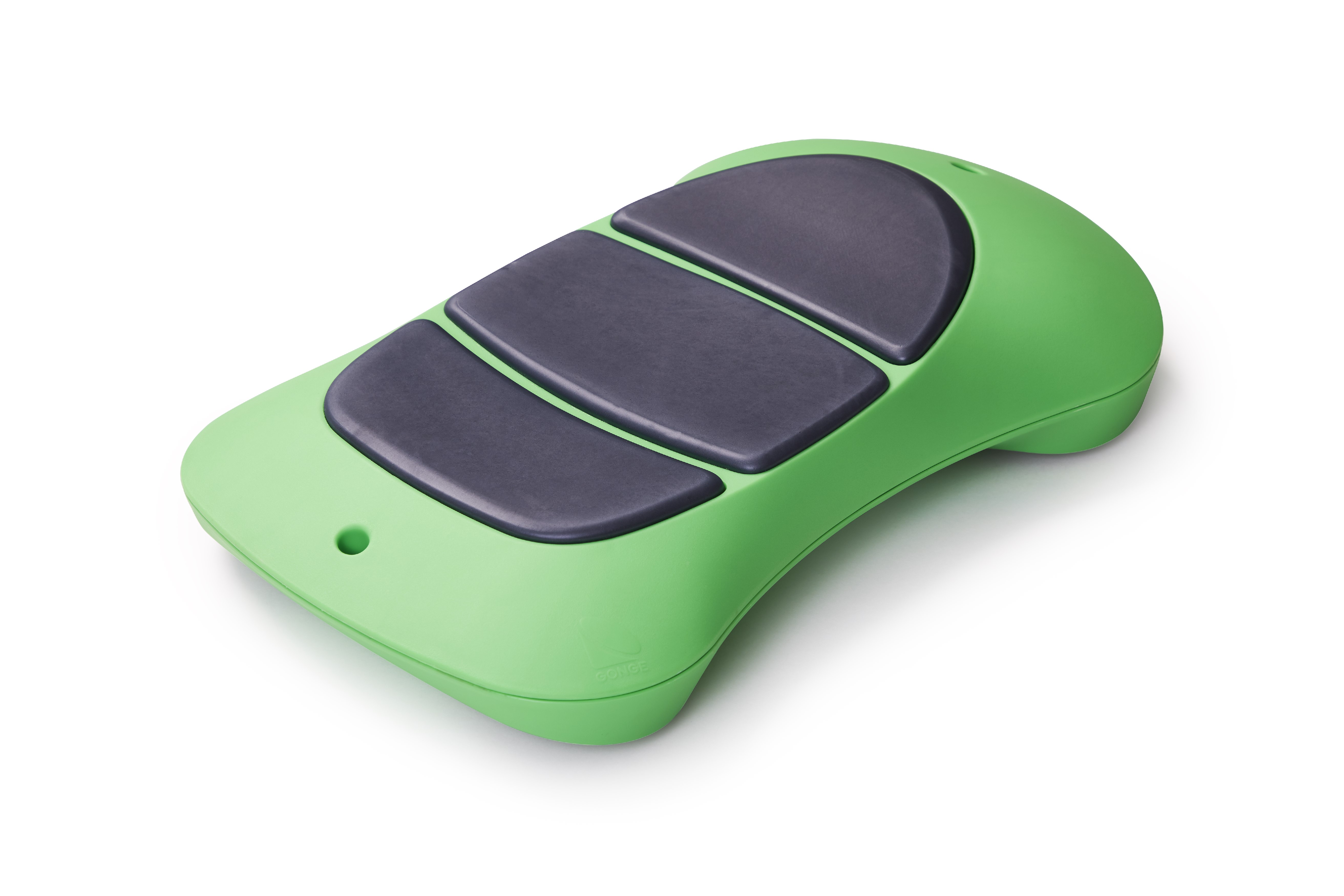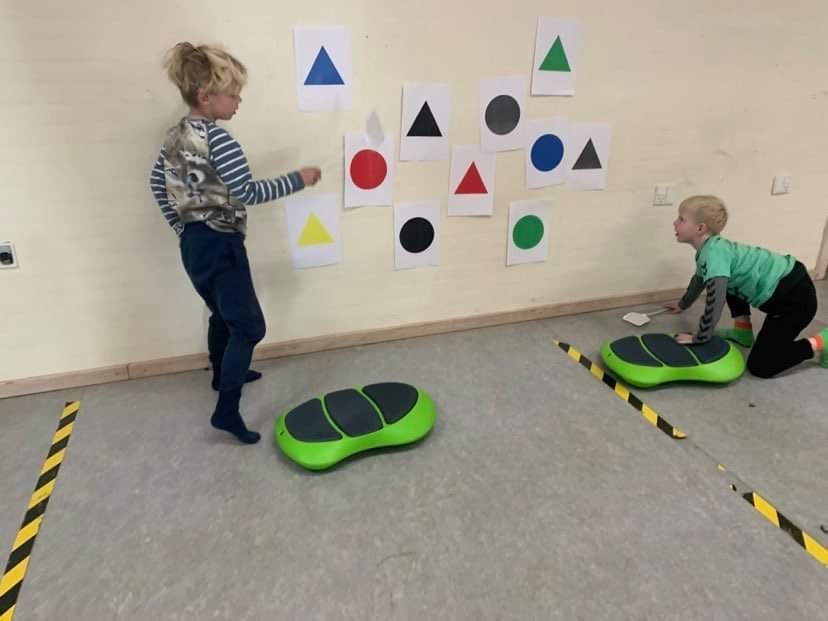An experienced educator contacted us and asked for help. She had discovered that, from time to time, her group of children found it difficult to understand instructions for new games. Rather than follow the rules, the children often just ran around when the games began. The educator always ended her presentation of the rules with a rhetorical question, i.e. to ensure that the children had understood the rules. However, the children often seemed to daydream and when it was their turn to say something, they had invariably forgotten what they wished to say. Based on the educator’s observations, we decided to focus on working memory. The Floor Surfer is an excellent instrument you can use to exercise working memory. You give the child a piece of information that he/she has to memorise while performing a task on the Floor Surfer. The training is therefore a combination of play, movement and body control with working memory stimulation.
The activity – rules of play
The children form teams and line up. They have to move from A (starting point) to B (a wall with pictures) and then back to A on the Floor Surfer. Each team is assigned one Floor Surfer. The children may sit or lie on their stomach on the Floor Surfer, depending on their motor skills or on your chosen focus. When the first child is ready on the Floor Surfer, you give the child one or more words to memorise (e.g. “red apple”). The child now moves from the starting point towards the wall with pictures. When the child reaches the wall, he/she must get up from the Floor Surfer, pick up a fly swatter and swat the correct picture, then lie back down on the Floor Surfer and return to the starting point. The next child climbs onto the Floor Surfer and the activity is repeated.
Focus points
In the activity described above, the children receive innumerable pieces of information for their working memory to process. It is important that the adult is aware that some children may find some or all of the following points difficult and therefore that differentiation of some kind will be necessary.
• Noise from the other children.
• Knowledge of letters, colours, shapes, numbers, etc.
• The rules of the game.
• The child‘s physical fitness and coordination between child and the Floor Surfer.
• To make the rules simpler, you can ask the children to tap on the pictures with their hands
• This activity can be performed by children in groups, but also by a child on their own.
Development opportunities
This activity offers many opportunities for developing the child’s or children‘s skills. They can learn colours, shapes, numbers or letters. To introduce an element of progression, the adult may ask the child/children to memorise several objects.
After a couple of months, the educator contacted us again. She found that the same group of children now held on to information better and that the group learned new games much faster.









